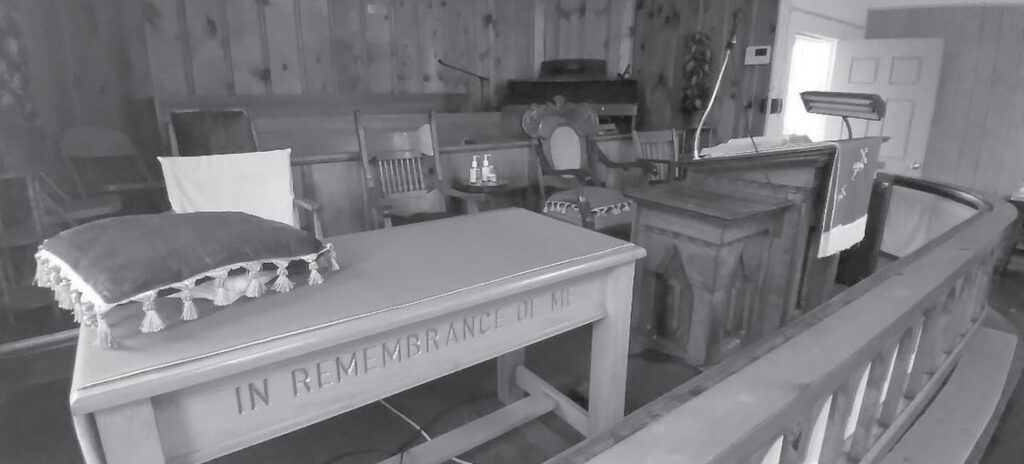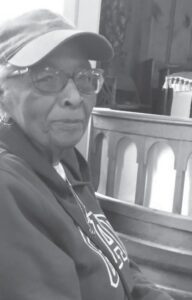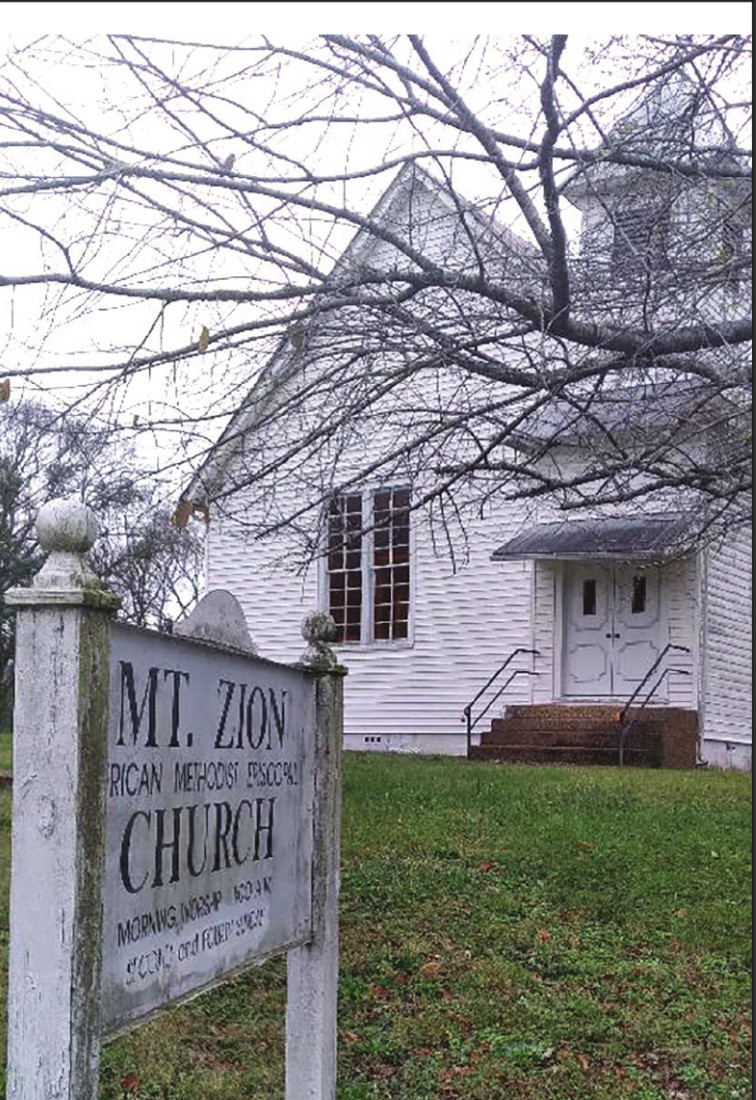The church has been a landmark along Columbia Avenue, with its tall steeple announcing a spiritual presence home, just a sidewalk’s distance from the roadway. Mt. Zion African Methodist Episcopal Church also has been a community resource both before and after the 1909 tornado destroyed it and many structures in Centerville.
That was 115 years ago. But this church has roots back to 1880, when it also became home to Centerville Male and Female Academy as well as the Richard Allen Lodge of the Knights of Pythias.
 The Communion Table At Mt Zion ChurchFrankye Young Ward, who was baptized at Mt. Zion in 1948, says her research showed weddings being performed at the original church around 1895 or 1896 by a Rev. Vann. “When I was growing up, and even after I came back home to live in the ‘50s, we had at least 20, 25 members. Had a lot of young people here. But all of them decided to move away; none of them decided to live here.”
The Communion Table At Mt Zion ChurchFrankye Young Ward, who was baptized at Mt. Zion in 1948, says her research showed weddings being performed at the original church around 1895 or 1896 by a Rev. Vann. “When I was growing up, and even after I came back home to live in the ‘50s, we had at least 20, 25 members. Had a lot of young people here. But all of them decided to move away; none of them decided to live here.”
But many of those adults remembered where they came from, she says.
“We could always count on them when we needed something — if we were having a program or something. . . . But those people have all passed on. Our church just stopped growing.”
The church was closed a month ago by the 13th District trustees of the AME’s Kentucky-Tennessee Conference, which had stopped sending a minister here last summer after more than a century. The closure ended the stewardship of Ella Mayberry and Ward, the church’s final two members, whose faithfulness became a struggle.
“I’d say for the last eight years at least,” Ward said on a quiet afternoon inside the well-used sanctuary. “Because our membership has dwindled. We tried as long as we could. But we’re down to two active members.”
With help from dedicated supporters, the two women were able to divvy up the bills and get them paid — utilities and the security system among them — “then put a little in to try to keep the insurance going.” The 13th District trustees will decide soon what to do with the property, Ward says; a sale is possible. She would like to keep the parcel behind the church, vacant now but once the site of a four-room parsonage.
“The last minister we had live in the parsonage was John Henry Brown; that was in the late ‘40s, early ‘50s. But we kept the parsonage, and ministers that would come in, if they wanted to spend the night, they could spend the night.” Ministers eventually stopped making the overnight trip — the ease of modern transportation played a part, no doubt — and the residence “got into disarray so we tore it down.” The church itself may suffer a similar fate, despite its historical standing. “History will tell you,” she says, “this was the site of the first black high school here in Hickman County. There was the church, the Knights of Pythias lodge and the school. One of my aunts was one of the teachers here, a great-aunt.”
 Frankye Ward, 87, one of two remaining members of Mt. Zion ChurchFrankye Ward’s family is all over Mt. Zion. Her great-grandfather, Charlie Whiteside, a blacksmith, helped build it in 1887, succeeding a log structure. Frankye was the fourth generation of her family to be baptized at Mt. Zion; Her daughter, Anna, represents the fifth. “When Bernard High School burned,” in 1956, “they had school here. They used this church, the old American Legon building and I don’t know where else. The graduation that year was held here, the year after the school burned.”
Frankye Ward, 87, one of two remaining members of Mt. Zion ChurchFrankye Ward’s family is all over Mt. Zion. Her great-grandfather, Charlie Whiteside, a blacksmith, helped build it in 1887, succeeding a log structure. Frankye was the fourth generation of her family to be baptized at Mt. Zion; Her daughter, Anna, represents the fifth. “When Bernard High School burned,” in 1956, “they had school here. They used this church, the old American Legon building and I don’t know where else. The graduation that year was held here, the year after the school burned.”
Mt. Zion also is home to a bell tower, where the bell remains intact; it weighs a ton. Ward would like to remove and display it, though much muscle will be needed. Her grandfather, Ben Hornbeak, was the bell-ringer, tolling it for funeral processions, ringing it on Sunday morning. The sound could be heard across town, up to the old county farm, off Puckett Hollow Road, where young Frankye would pick blackberries early on Sunday. “When my granddaddy would ring that bell. . . . ‘OK, Frankye, it’s time to go. Uncle Ben is ringing that bell; you can’t be late for Sunday school.’” Such memories are among the ingredients that have kept Ward and Mayberry working in the church, helping to spread its message of love and salvation for so long. Such memories make the church’s closure personally difficult.
“It was hard for me,” says Ward, now 87, “because I was baptized here at 12 years old. Never changed my membership; I went to other places to live but I didn’t change my membership. . . . You participate with the activities of that church but you don’t consider yourself a permanent member.” Clearly, her home — whether in that tall building or surrounded by the warm memories of generations past — will remain where the bell once rang.



